How to Wear an Engagement Ring and a Wedding Band
So, you're engaged, or married, or thinking about both. And now you're stuck wondering: which ring goes where? Do you wear both at once? Can you mix metals? Does anyone even follow the rules anymore? Don't worry. You're not alone in this. Let's lay out the traditions, the reasons behind them, the new ways people are styling their rings, and what actually makes sense for your lifestyle.
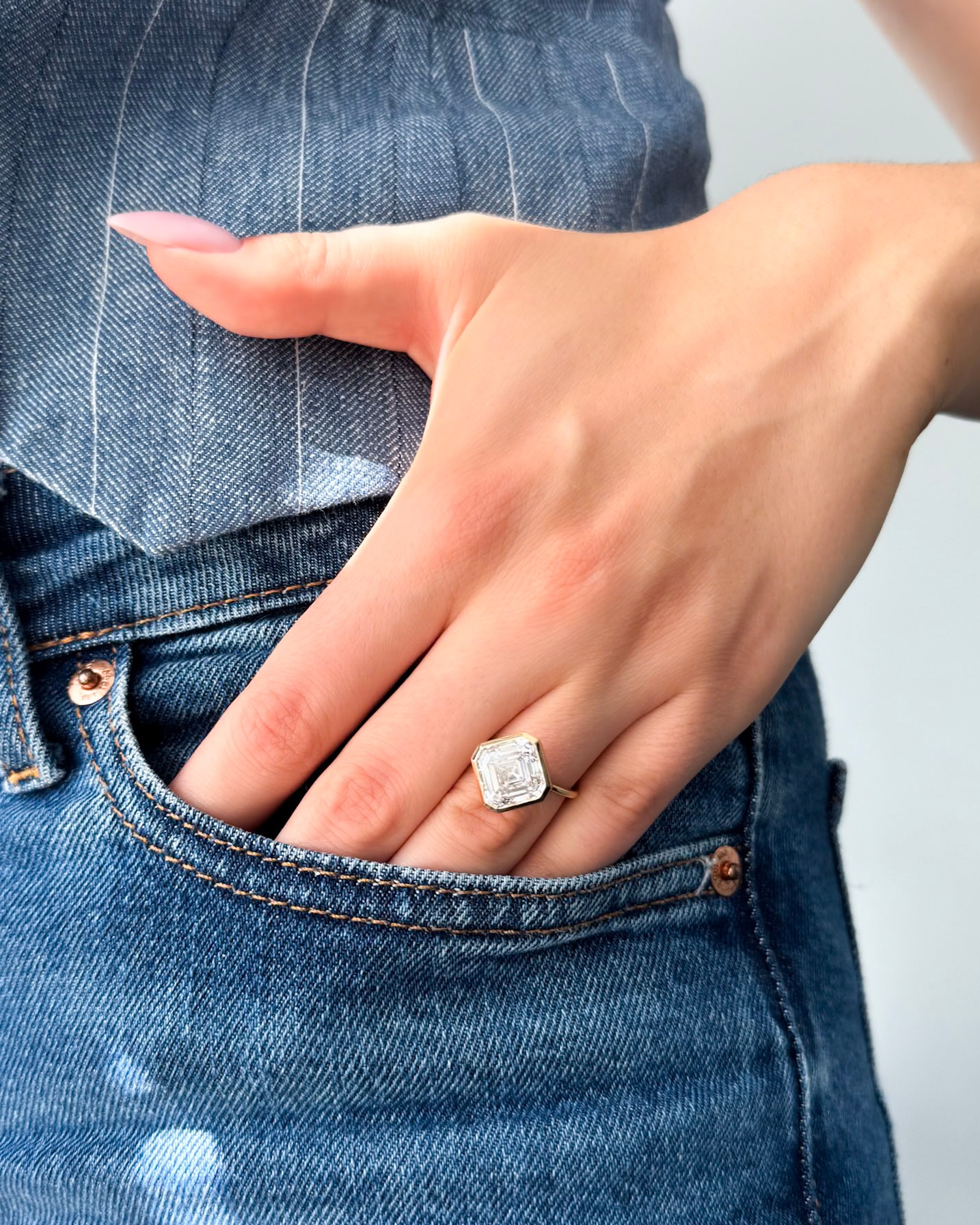
Your rings, your rules. From tradition to trending—here’s how to wear your engagement ring and wedding band (or not 👀).
The Traditional Order: What's Up With Band First?
The classic way to wear both rings is to slide on the wedding band first, then top it off with the engagement ring. That means the band sits closer to your heart. It's symbolic, sure, but it also has a simple logic behind it, passed down from Roman times—people thought a special vein, called the "vena amoris," ran from that finger straight to the heart.
Even now, most people follow this order out of habit or tradition. A lot of Western couples, about 78%, still wear their wedding band this way on the left ring finger. And it shows up in the numbers, too. Jewelers design wedding bands specifically to sit neatly under engagement rings, especially when couples shop as a set. Think curved or contoured bands; they're shaped to hug your engagement ring so the two fit together, flush, and secure.
But is this setup still for everyone? Not always.
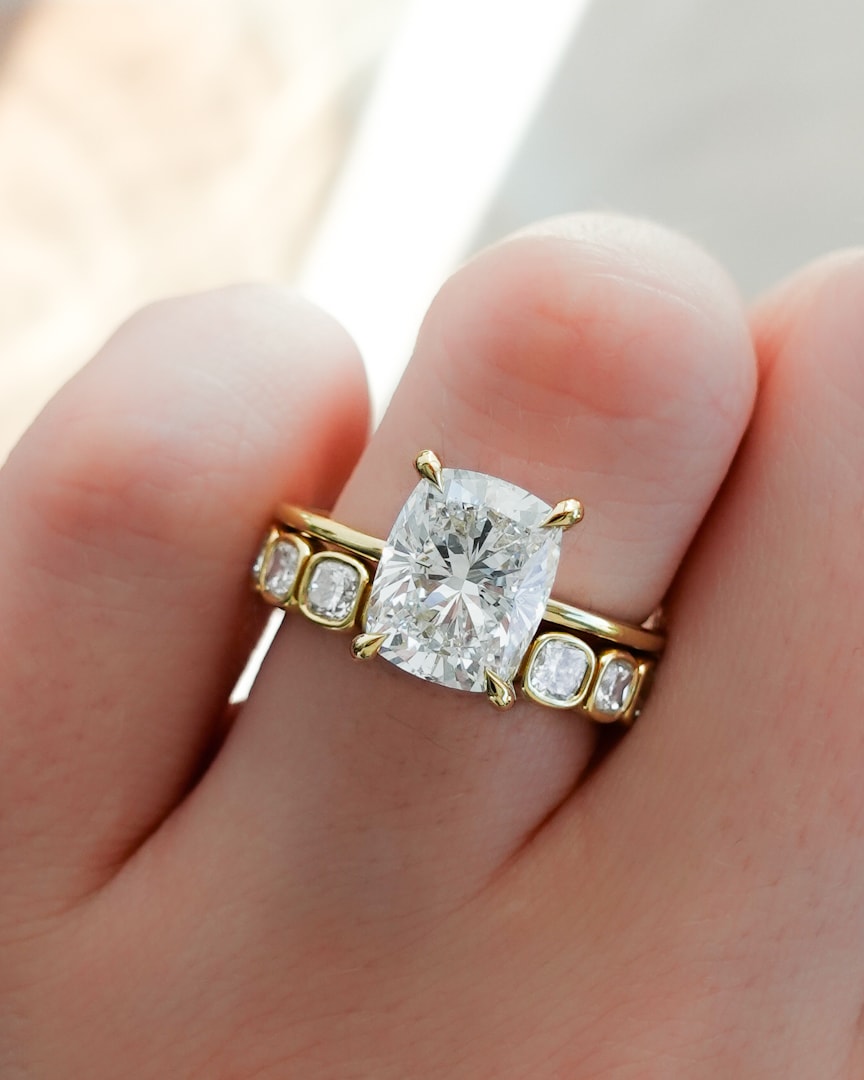
Wedding band worn first, engagement ring on top—just like tradition intended. 📍Left hand, ring finger.
Real Life Isn't a Photoshoot: Modern, Practical Tweaks
Trendy or not, your hands are busy. You cook, type, lift, stretch, dig, or scrub. So some people are skipping the engagement ring for their day-to-day. Around 35% of couples choose to wear only the wedding band on a regular basis, saving the engagement ring for dinners or events. It makes sense. Thick, solid bands (like 3 to 5 millimeters wide) are on the rise, partly because they're easier to wear alone and don't slide around.
If both rings are worn every day, some people solder them together. That means a jeweler fuses the rings into a single piece. It keeps them aligned and cuts down on wear and tear. Jewelers often recommend this for people in physical jobs. It also saves you from having to readjust a lopsided stack ten times a day.
Speaking of comfort, some styles reduce the chances of snagging or scratching. For example, channel-set bands (where stones sit between smooth metal edges) hold up better under pressure. They don't catch on clothes, gloves, or hairnets. That's why a lot of healthcare professionals or gym trainers go this route.
There's also the real fear of losing a ring. High-value rings, especially ones over $10,000, are often insured, and that insurance comes with rules: take it off during manual work. Because of that, some people trade their diamonds for silicone bands while working. Call it a safety swap, not a downgrade.
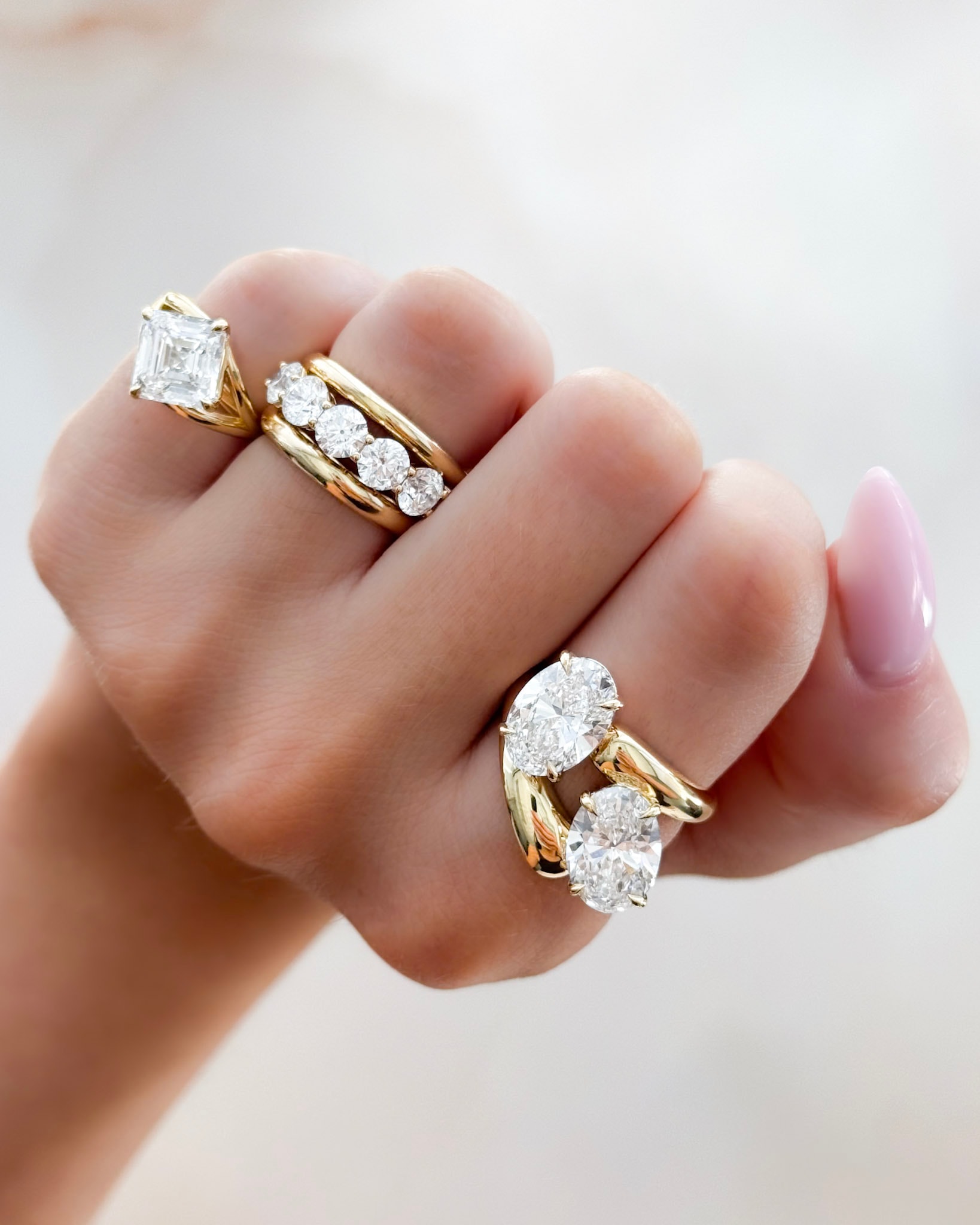
Modern minimalism. Just the wedding band, perfect for everyday wear and busy hands.
2025 Trends That Actually Change How You Stack
Ring trends in 2025 are all about mixing and stacking, and they aren't making it easier to decide how to wear your rings. But they do give you more options.
Mixing metals like yellow gold and white gold is a big deal now. That combo lets you repurpose heirloom rings or mix old and new. Around 40% of couples say they pick mixed metals on purpose to keep their everyday jewelry from clashing. If your engagement ring is white gold, it doesn't mean your wedding band has to match. You can play with contrast.
Stones are getting more personal, too. Couples are adding colored gems to their stacks, think sapphires on the band or emerald accents. It's not subtle, and it's not supposed to be. This kind of contrast puts the wedding band on equal visual footing with the engagement ring.
Stacking styles also change based on the ring's shape. Curved or V-shaped bands are still trending in 2025. They live comfortably under pear, marquise, or cushion-cut engagement stones. These aren't aesthetics-only choices. They affect how your rings sit on your finger. They cradle larger diamonds, spreading out tension and reducing rubbing.
There's a growing trend for asymmetry, too. About 20% of buyers now intentionally go for rings with very different textures, like one hammered and one polished, because they don't want their bands to blend in.
Social media plays a role here. Hashtags like #stackgoals and #ringstack have created a new normal. People want rings that stand out on their own, not rings that always have to match perfectly.
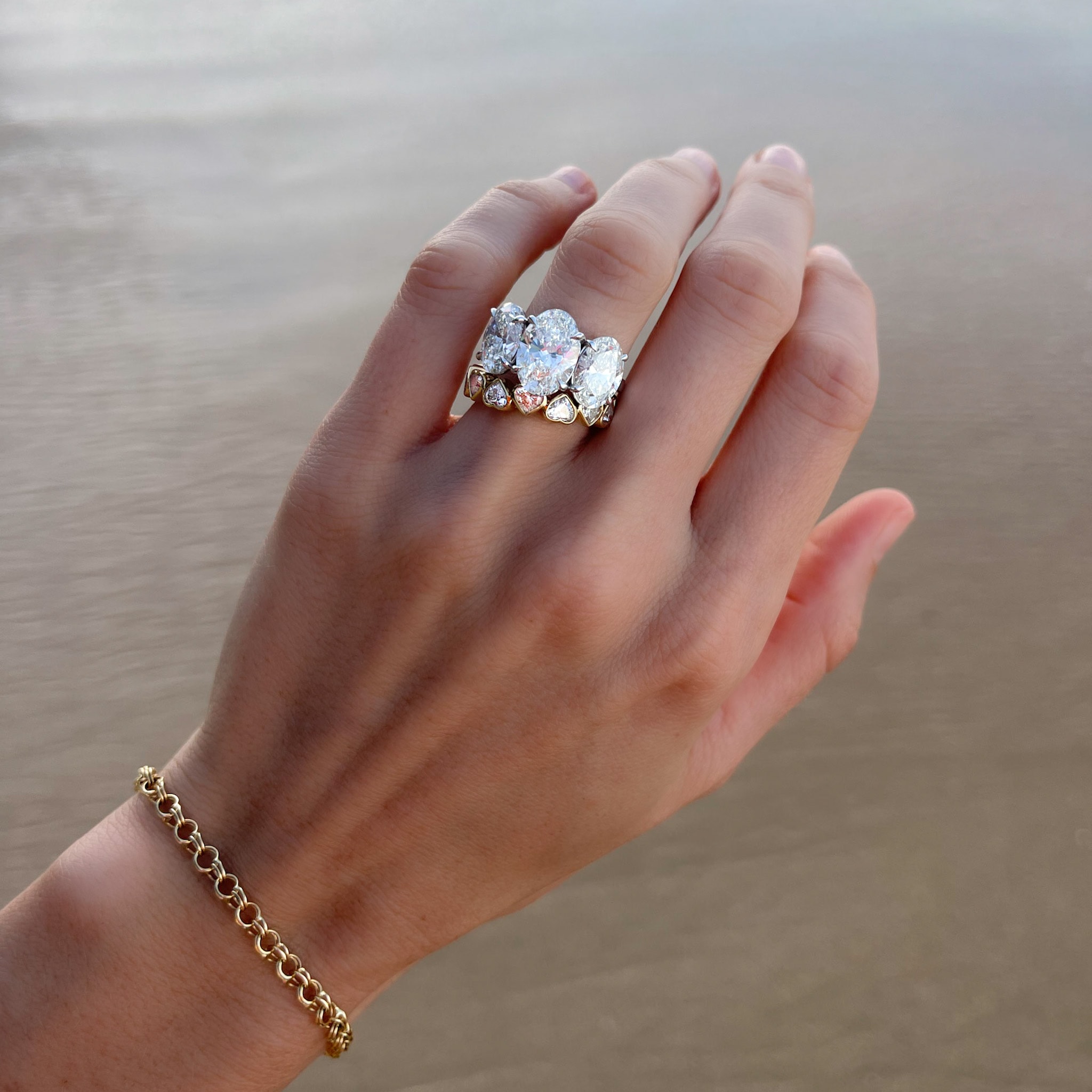
Mixed metals, major moment. A yellow gold band paired with a white gold engagement ring = proof you don’t have to match to look good.
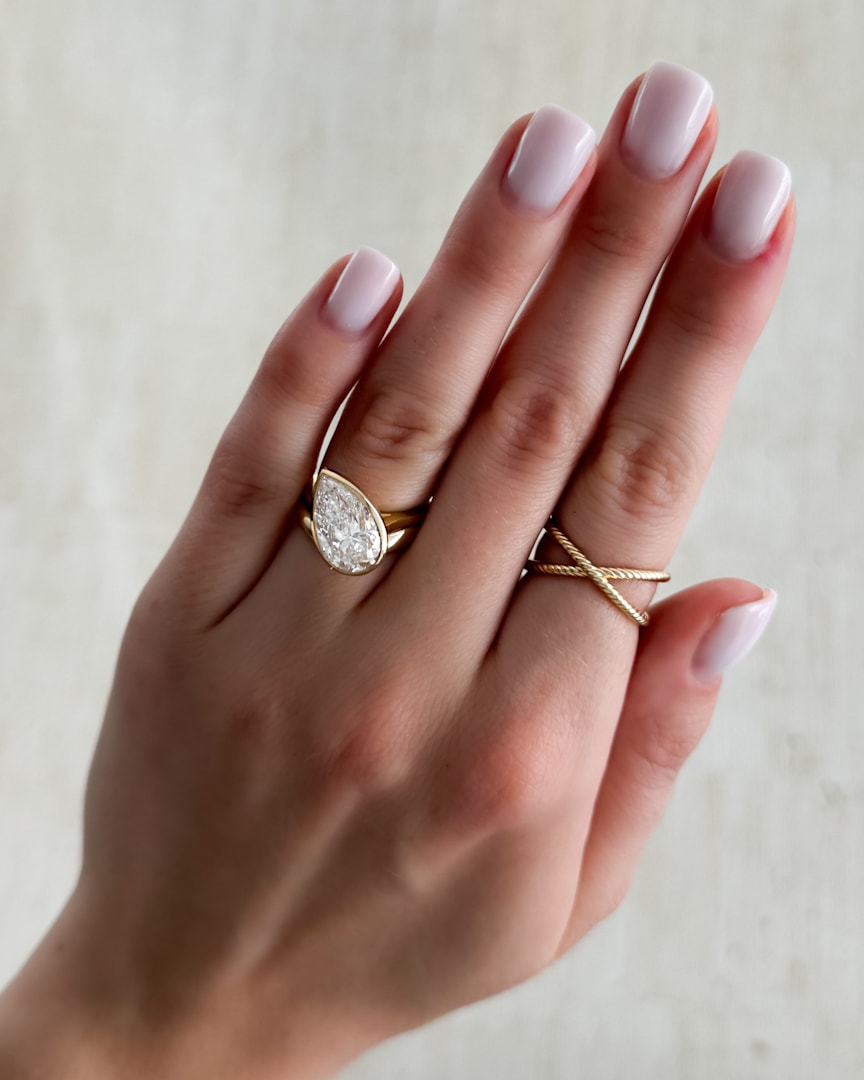
Contoured Wedding Band goals. Designed to hug your engagement ring perfectly—flush fit, no gaps, just style.
Different Cultures, Different Hands, Different Orders
Let's clear one thing up: not everyone wears rings the same way. If you've seen someone wear their wedding band on their right hand, they're not doing it wrong. They're following their culture.
In Russia and Greece, people usually wear wedding bands on the right hand. The same goes for Germany and Brazil, though with some twists. In Brazil, couples start with the ring on the right hand during an engagement, then move it over to the left after the wedding.
In India, some people skip the left hand for cultural or spiritual reasons, though that's shifting in urban areas due to Western habits. Then there's Scandinavia. Couples there often use a simpler band for the engagement and save diamonds for the wedding band instead of the reverse.
Even in the US and UK, habits aren't one-size-fits-all. Some people wear engagement rings on one hand and bands on the other. Same finger, different hand. Some use their middle fingers if their ring fingers get too tight or swollen. There's no rulebook that says you'll be kicked off the marriage train for mixing things up.
Let's be real: most of these "rules" are passed down, not enforced. And they evolve with how society views relationships, money, and self-expression.
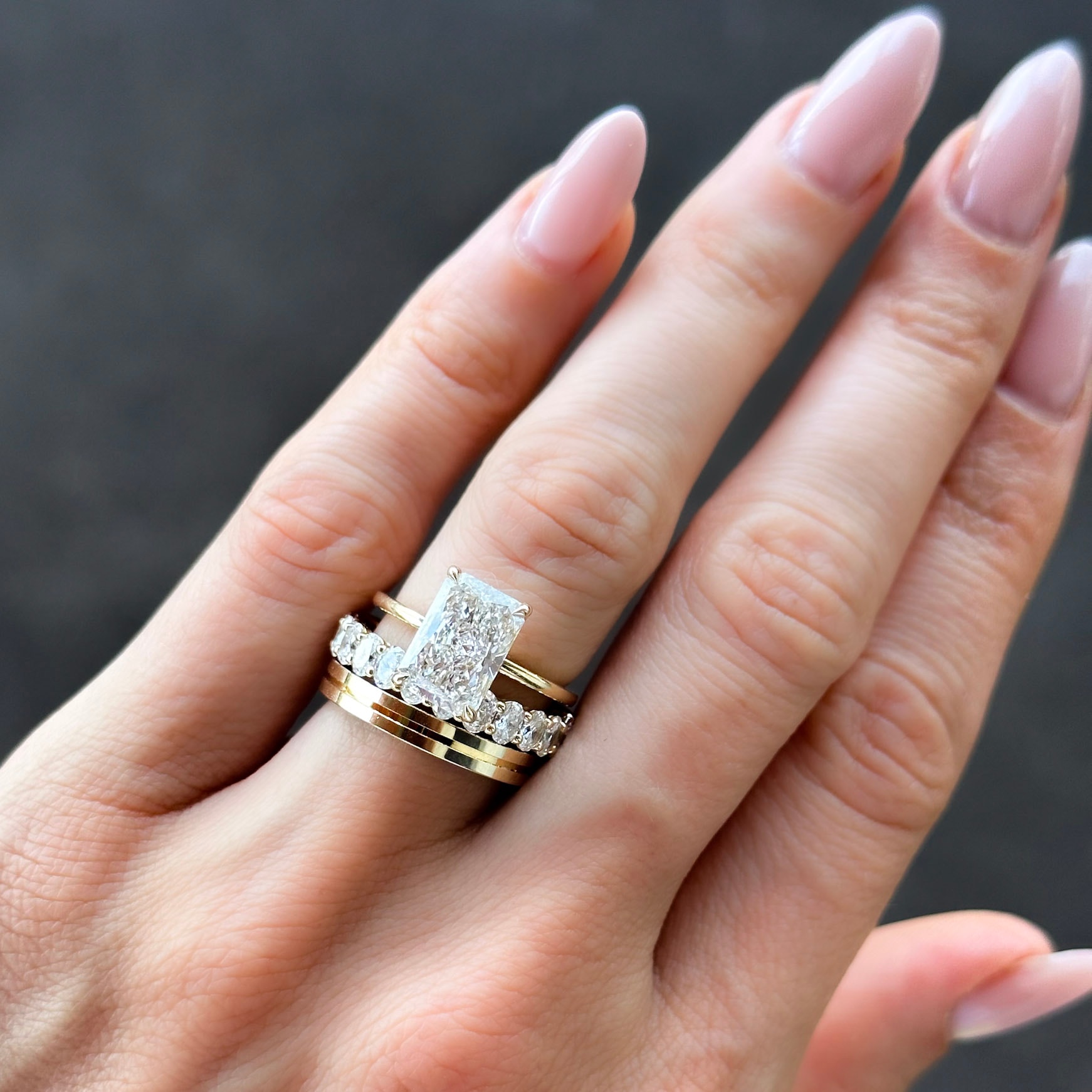
Bold and beautiful. Thick gold band with a high-set diamond—yes, you can mix statement pieces with everyday wear.
Style Meets Sentiment, Not Pressure
At the end of the day, there's enough pressure in picking the rings and paying for them. The average ring cost today? Between $6,527 and $8,580, depending on where you live. Top spenders in Washington drop more than $10,000, around 12% of their yearly income. At that price, you want to wear it how you like.
That said, 89% of married people still say their ring symbolizes a real sense of commitment. It's personal. Some people wear rings as reminders of their bond. Others find them too clunky and only wear them part-time. And then there are those who wear engagement bands alone because it feels right. None of it makes your marriage less or more official.
Trends, weddings, and expectations will always change, but your hands, your rings, and your comfort level don't lie. You might buy both rings and wear one. You might skip the band altogether. You might swap stacks every week, depending on your outfit. That's fine. What matters is that it works for you.
And if someone tells you you're wearing it wrong? They're probably stuck in someone else's idea of "right."
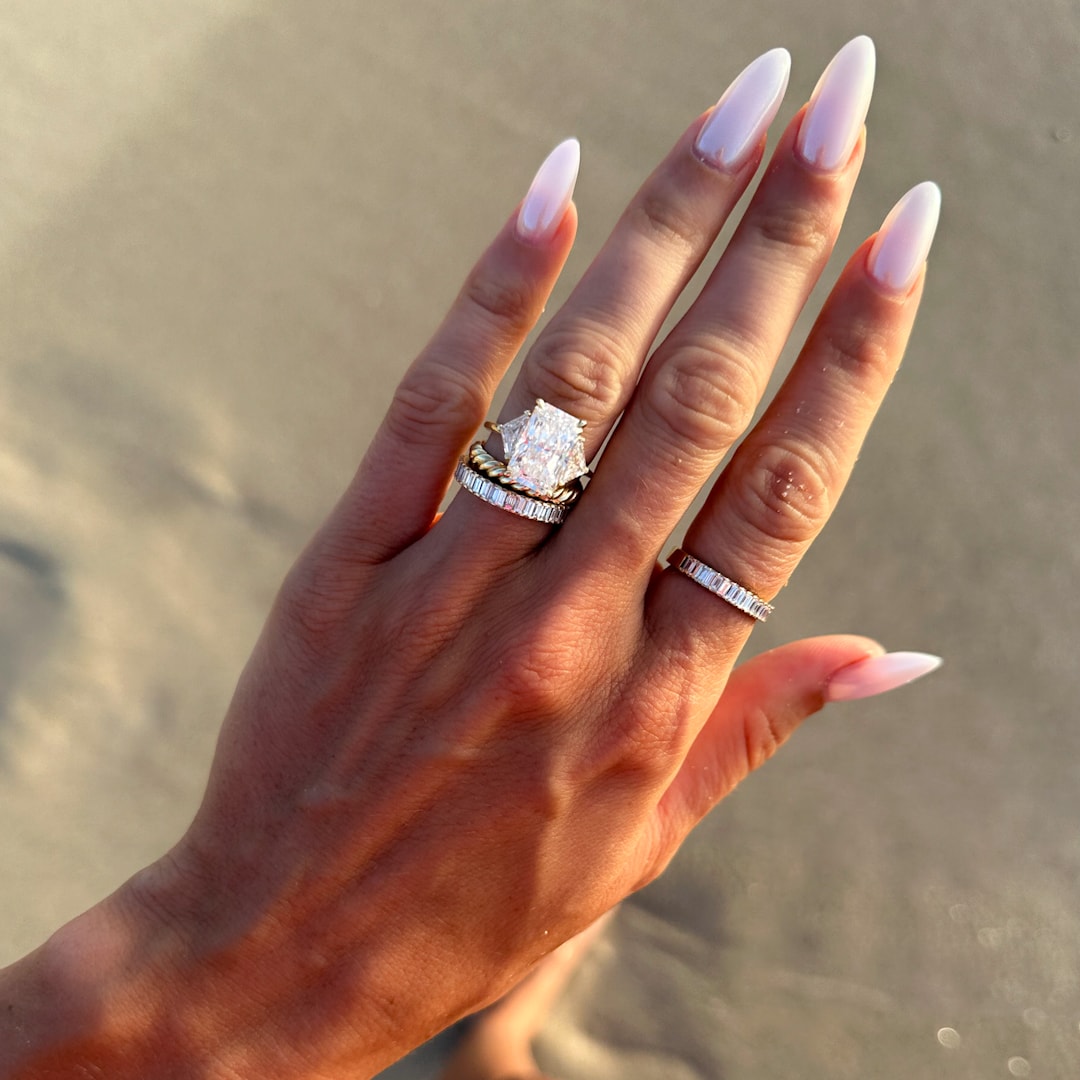
Stack with confidence featuring our Three Stone Engagement Ring with Shield Side Stones and an Elongated Radiant cut Diamond.
The Bottom Line
There's no secret formula. Start by thinking about what you do each day, how you want your rings to look and feel, and what actually fits. There's tradition, but there's also tailoring your rings to you. After all, you're the one wearing them.








dthomascrawford@gmail.com
May 20, 2025
Thank you, excellent information.